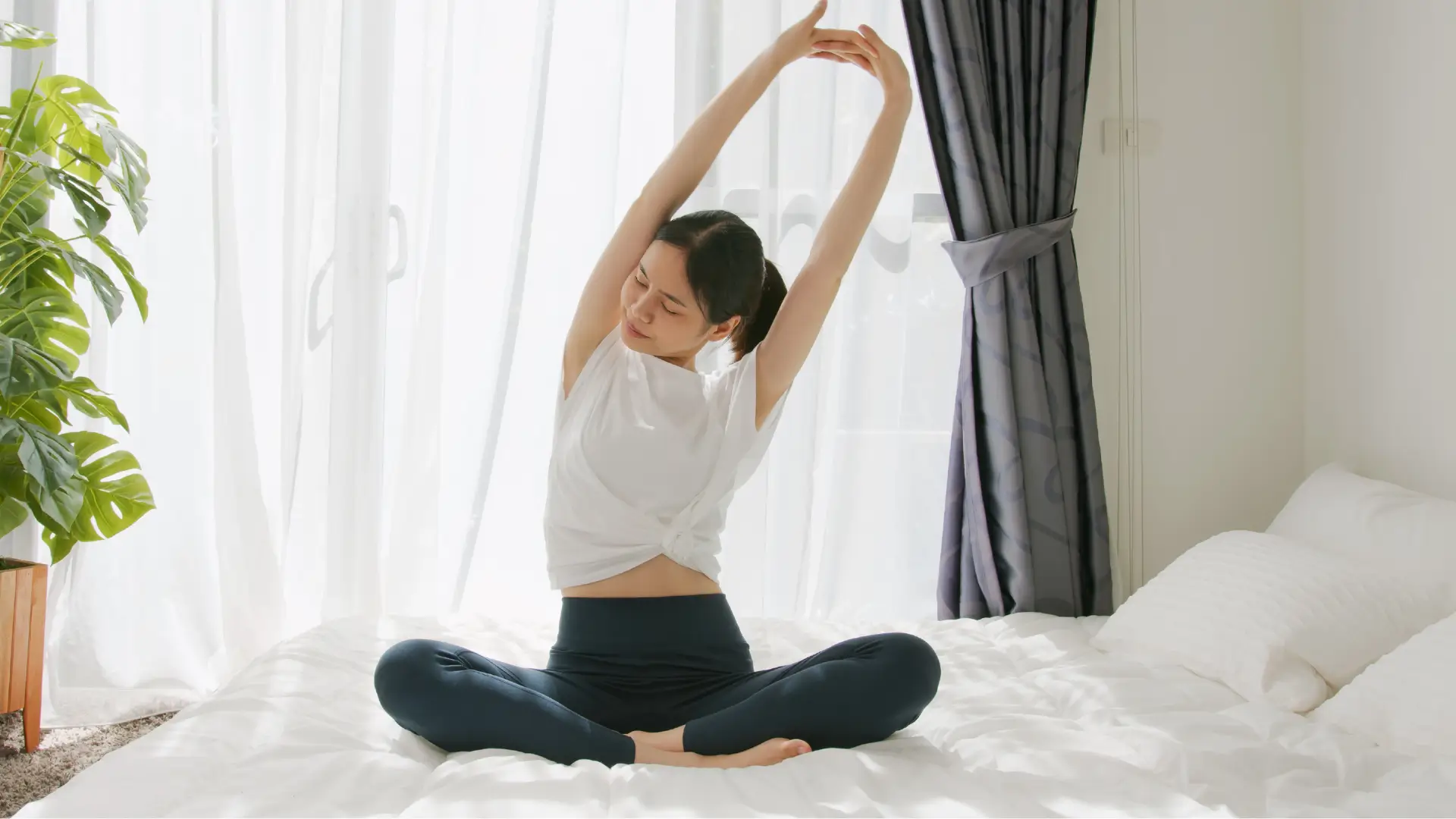
Lower back pain is a common complaint for millions of Australians, and can be attributed to a number of concerns from physical ailments to poor posture and sedentary lifestyles.
Our guide demonstrates 8 of the most popular lower back stretches and yoga poses aimed at relieving back pain and improving flexibility, posture and stability. Learn more about the stretches here, or read our tips and lifestyle recommendations on improving the health of your lower back.
The advice in this guide is for reference only, and is not intended to substitute medical care. If you are experiencing back pain, please consult your healthcare professional. Always consult with your doctor before engaging in any new physical activity.
1. Child's pose stretch
The child’s pose is a gentle stretch known to lengthen the spine and open the hips, promoting relaxation and flexibility. Because it targets the muscles surrounding the back, the child’s pose is an ideal stretch to relieve lower back pain.
Step-by-step:
- Beginning on all fours, sit back on your heels with your knees apart or close together, depending on comfort, and toes touching.
- Lean forward and bring your torso down toward the mat, stretching your arms forward with your palms down.
- Allow your forehead to rest gently on the mat. If it doesn’t reach, use a folded blanket or cushion for support.
- Stay in the pose for 30 seconds to a few minutes, depending on your comfort level.
- To come out of child’s pose, use your hands to push yourself back up to a kneeling position.
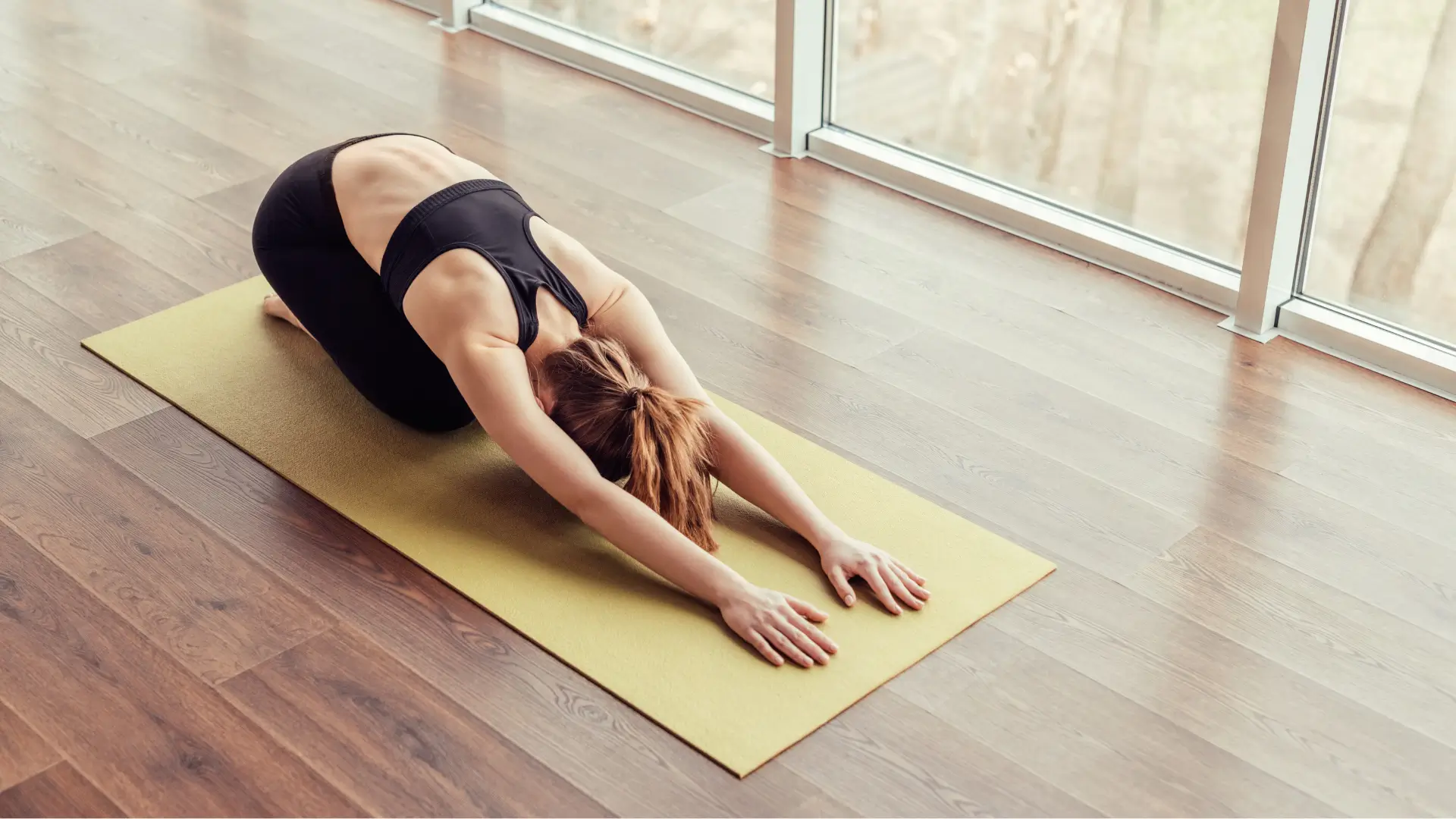
Safety and comfort tips
- Instead of placing your arms straight out in front of you, you may choose to keep them resting alongside your body with your palms facing upwards.
- To avoid causing muscular strains, keep your neck, jaw and shoulders relaxed.
- Place a blanket or towel under your knees for added comfort.
- Avoid the child’s pose stretch after meals, as it may upset your stomach.
2. Knee-to-chest stretch
The knee-to-chest stretch targets the muscles in your lower back, glutes and hamstrings. Not only does this exercise assist with lower back pain, but it may also improve flexibility.
Step-by-step:
- Lie flat on your back on a comfortable surface. Extend your legs and rest your arms by your sides.
- Draw your right knee up toward your chest while keeping your left leg extended.
- Wrap both hands around your shin or your kneecap. Gently pull your knee closer to your chest.
- Take slow, deep breaths as you hold the stretch for 30 seconds.
- Release your right leg back to the starting position and repeat the stretch with your left knee.
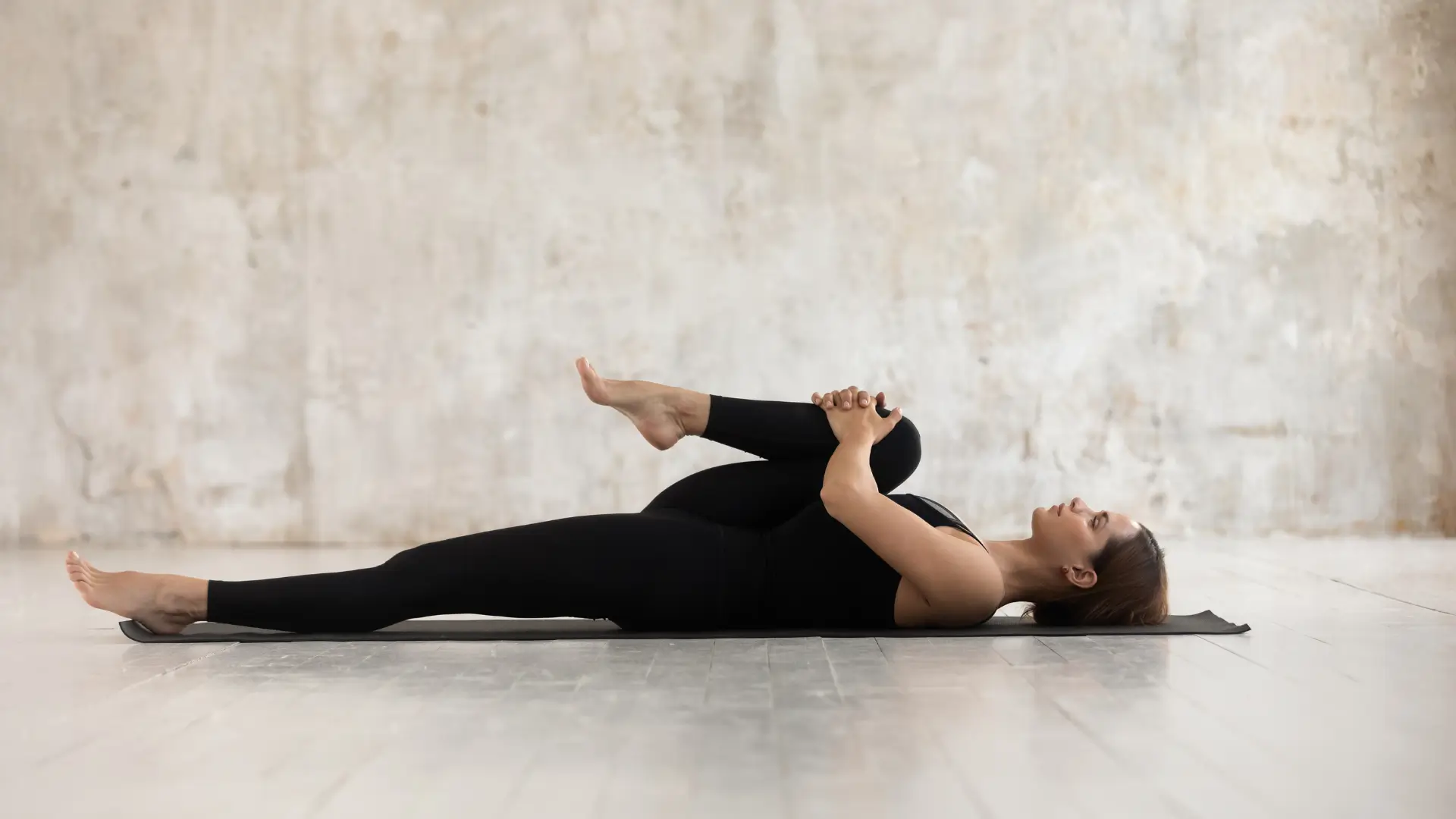
Safety and comfort tips
- You can do this stretch with the other knee bent, if it provides more comfort.
- For a deeper stretch, bring both knees to your chest at the same time, wrapping your arms around them.
- Avoid forcing or straining while pulling your leg closer to your chest.
3. Pelvic tilt stretch
Another stretch that can improve your flexibility, the pelvic tilt works on your lower back and abdominal muscles. Because it strengthens your core, this stretch is a great way to alleviate lower back pain.
Step-by-step:
- Lie on your back on a comfortable surface with your knees bent and feet flat on the floor.
- Gently tighten your abdominal muscles, drawing your belly button toward your spine.
- Flatten your lower back against the floor by slightly tilting your pelvis upward. This movement will cause your hips to rock back toward your ribcage.
- Hold the pelvic tilt for 5-10 seconds while breathing deeply and keeping the rest of your body relaxed.
- Slowly relax your muscles and allow your pelvis to return to its neutral position, creating a natural curve in your lower back.
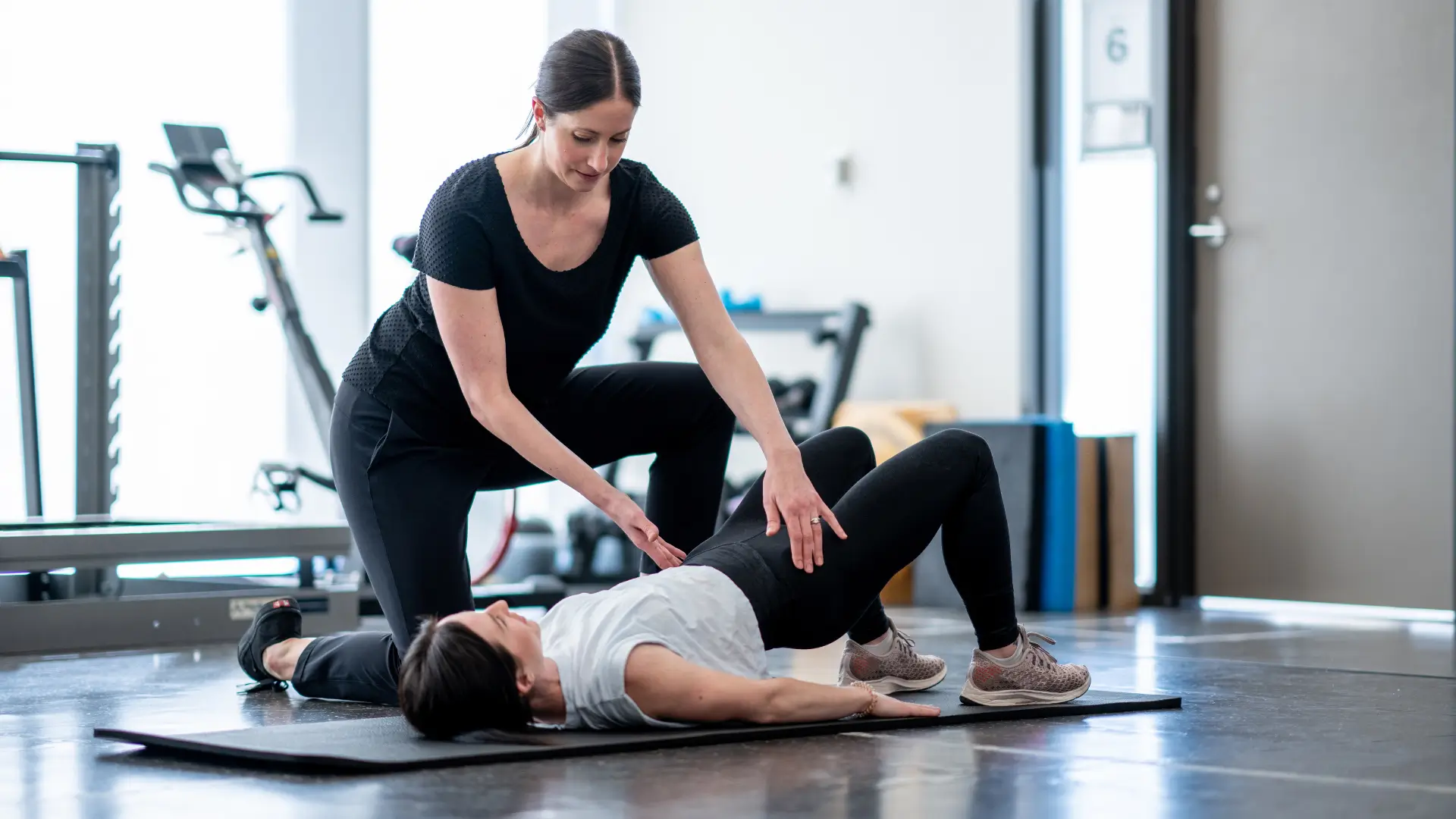
Safety and comfort tips
- Keep your feet firmly planted on the floor and try not to lift your hips or backside off the ground. Lifting your body will move you into a bridge exercise instead.
- Avoid over-arching your back when returning to a neutral spinal position.
4. Cat-cow stretch
The cat-cow pose is an ideal stretch for relieving back pain and stiffness. This yoga exercise concentrates on multiple muscle groups, promoting mobility and flexibility.
Step-by-step:
- Start on your hands and knees with your wrists aligned under your shoulders, and your knees hip-width apart.
- Drop your belly toward the floor, arching your back. Lift your chest and look upwards. This is the ‘cow’ pose. Hold for a few seconds.
- Gently tuck your chin into your chest and arch your spine toward the ceiling. This is the ‘cat’ pose.
- Alternate between the two poses, inhaling as you move into cow, exhaling as you move into cat.
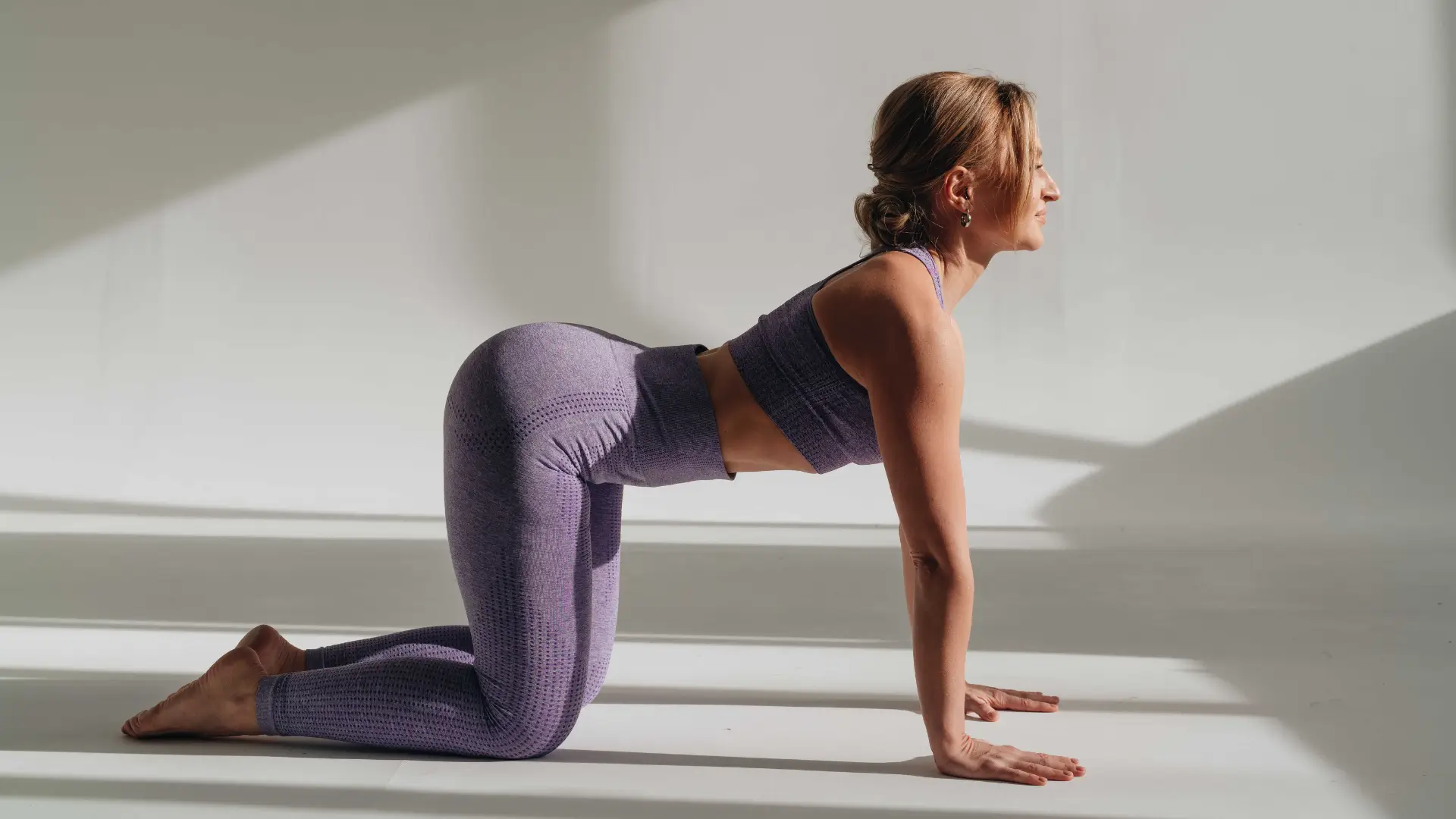
Safety and comfort tips
- Avoid straining your neck; do not force your chin to your chest in the cat pose.
- If your wrists hurt in this position, place your forearms on the floor, or on a stack of blankets or towels to raise your body off the ground.
5. Seated spinal twist
This stretch targets the lower back, hips and glutes, enhancing spinal mobility and improving flexibility. It also stretches the shoulders and neck.
Step-by-step:
- Begin seated with your legs extended and your back straight.
- Bring your right foot toward your left thigh, placing it flat on the floor outside your left thigh.
- Rest your right hand on the floor behind you for support, then move your left elbow to the outside of your right knee.
- Inhale to lengthen your spine, and exhale as you twist your torso to the right. Hold for 15-30 seconds.
- Slowly return to the centre and extend your legs. Repeat the twist on the opposite side.
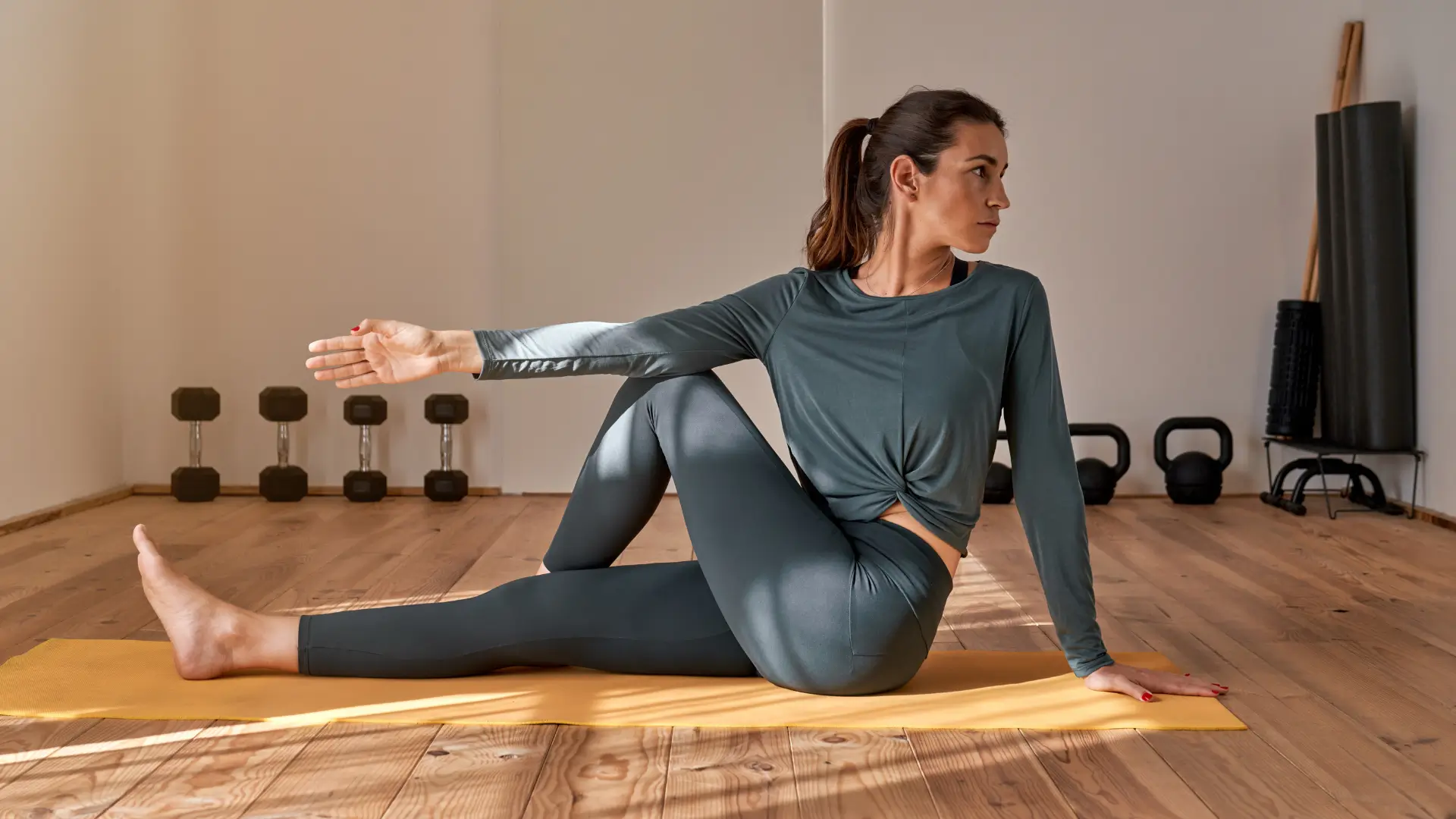
Safety and comfort tips
- Do not force your body to twist beyond what is comfortable. Keep your neck relaxed when moving your head.
- Instead of placing your elbow on your knee, hug your knee with your arm for a more gentle twisting motion.
- For a deeper stretch, look over your shoulder when twisting your torso.
6. Bridge exercise
Also known as a glute bridge, this exercise is beneficial for your posture and stability. The bridge stretches your lower back, glutes and hamstrings.
Step-by-step:
- Lie on your back on a comfortable surface with your knees bent and feet flat on the floor. Place your arms by your sides with palms facing down.
- Tighten your abdominal muscles to support your lower back and squeeze your glutes, then lift your hips toward the ceiling.
- Keep your knees, hips and shoulders aligned. They should form a straight line.
- Hold for 15-30 seconds, then slowly lower your hips back to the floor.
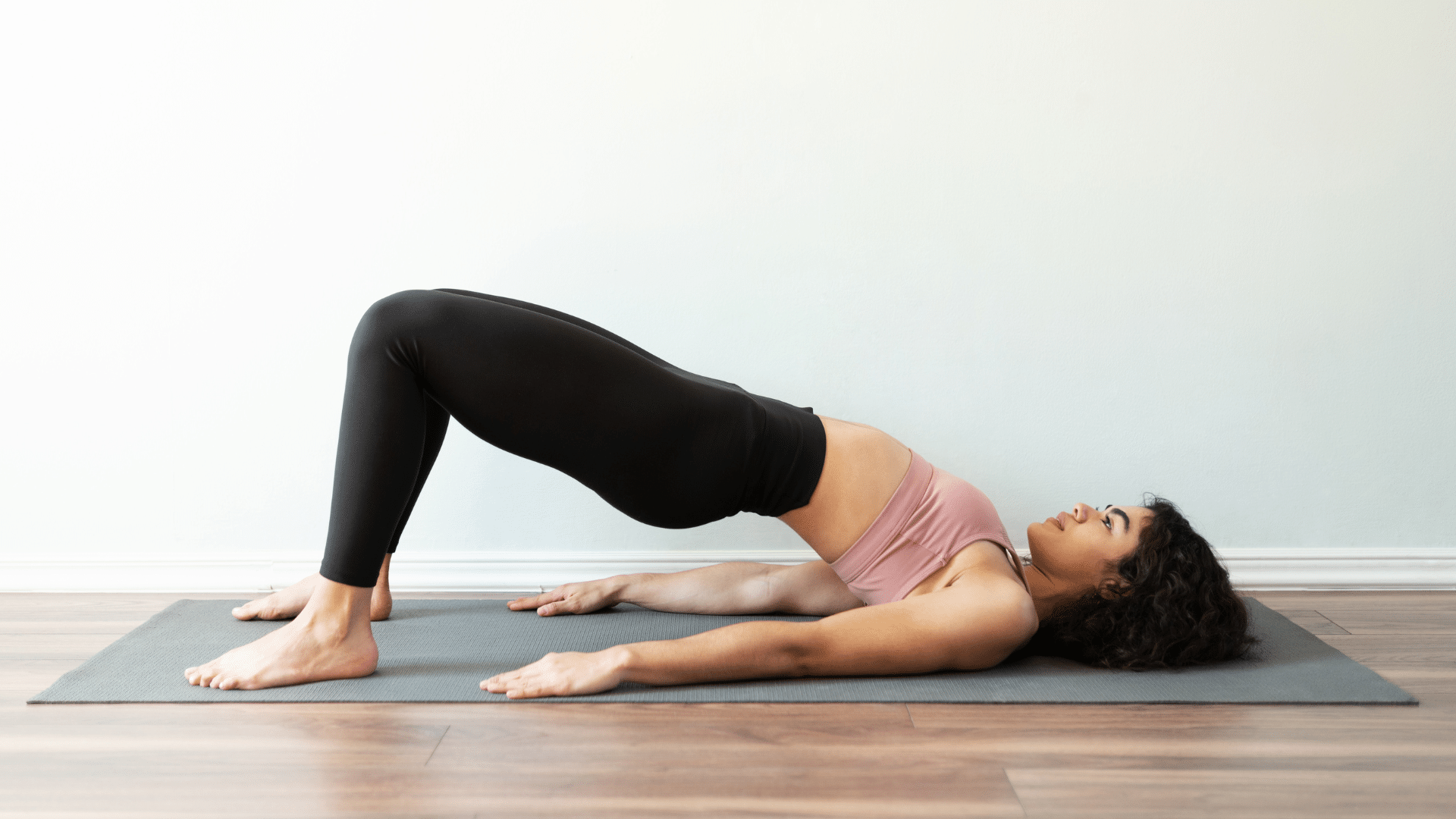
Safety and comfort tips
- Do not raise your hips too high or arch your back; your knees, hips and shoulders should form a straight line when you stretch.
- Try to keep your knees from splaying outwards.
- You can increase the stretch by pressing your arms into the floor to lift your chest higher.
7. Hip flexor stretch
Loosening tight hip flexors may ease pain in the hips and back. Tightness in these muscles is often caused by prolonged sitting.
Step-by-step:
- Kneel on a mat or soft surface with both knees bent at a 90-degree angle.
- Keeping your left knee on the mat, place your right foot forward, directly under your right knee.
- With your back straight, put your hands on your right knee and slowly lean your hips forward.
- Hold for 30 seconds before gently releasing the stretch and returning to your starting position.
- Repeat the process with your left knee.
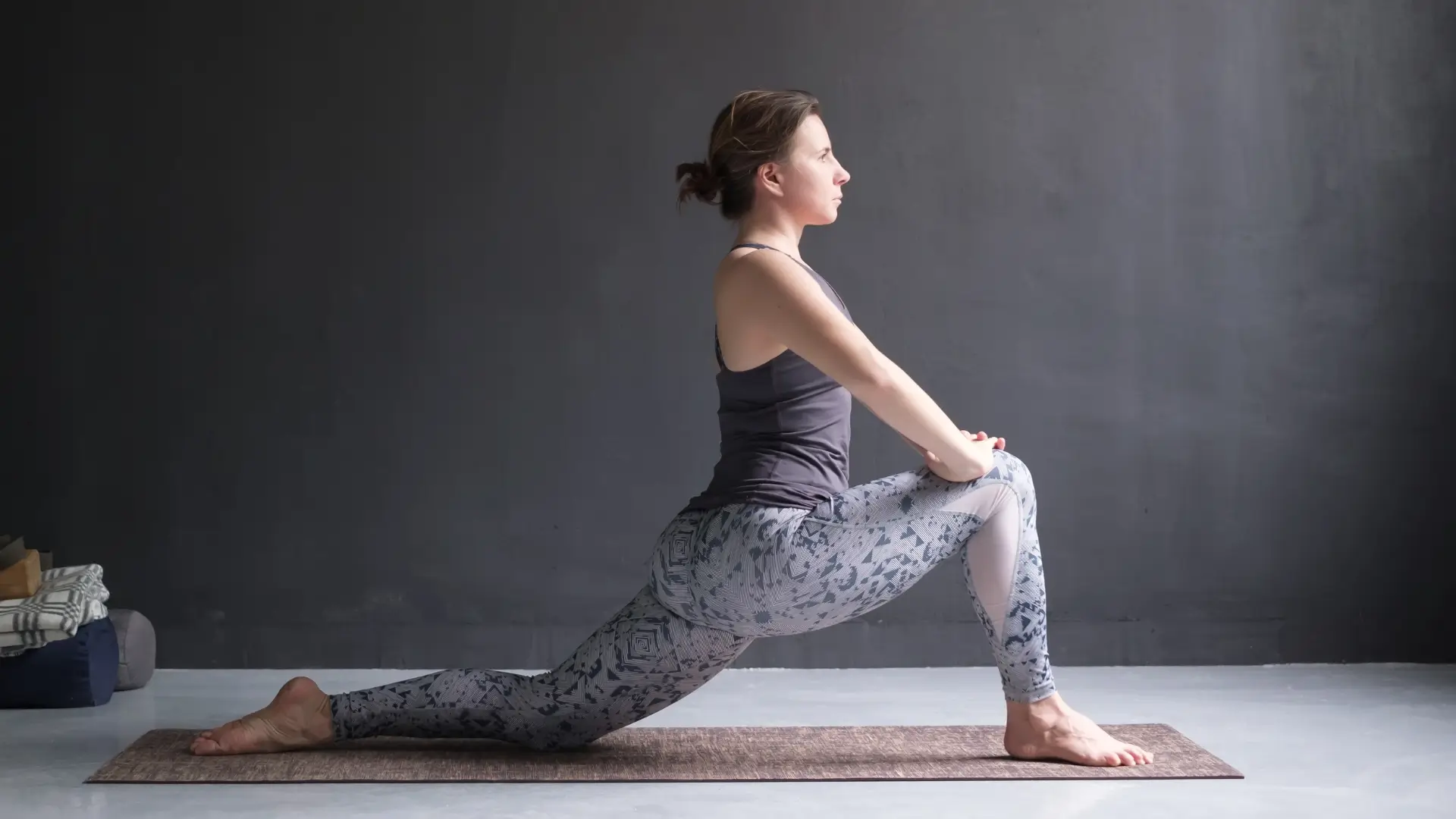
Safety and comfort tips
- Keep your knee aligned with your foot; it should not lean over past your toes.
- You can raise your arms in the air and lean back slightly to deepen the stretch.
- If there is any discomfort in the back, reduce the extent of your forward lean.
8. Legs-up-the-wall pose
Legs-up-the-wall is a yoga pose designed to stretch your hamstrings and lower back. It is also thought to improve swelling and circulation.
Step-by-step:
- Sit with the right side of your body against a wall, keeping your hip as close to the wall as possible.
- Lie back and swing your legs up, turning and adjusting your body so that your legs are resting vertically against the wall.
- Keep your body relaxed and hold for several minutes.
- To come away from this pose, bend your knees and roll carefully to one side. It is best to rest for a moment before sitting up slowly.
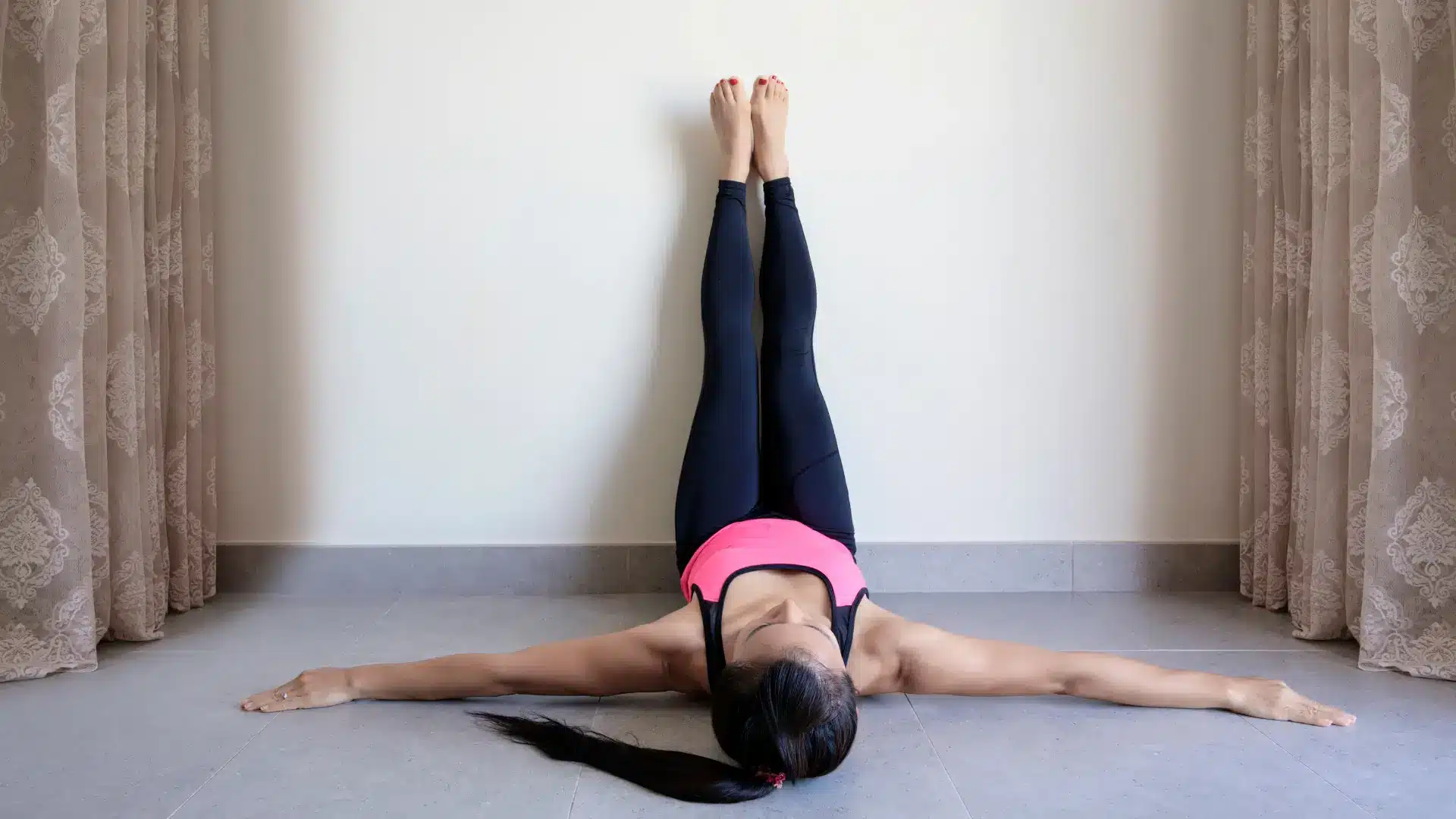
Safety and comfort tips
- This pose may not be ideal for those with certain health conditions, such as glaucoma, high blood pressure, and neck or back conditions. Please consult with your healthcare professional for more information.
- Place a folded blanket or cushion under your lower back or hips for comfort.
- If your hamstrings feel tight, keep a slight bend in your knees.
Additional tips for lower back health
In addition to stretching regularly, you may promote the health of your lower back with preventative measures and some lifestyle recommendations.
Maintain good posture
Whether you are standing, sitting, lying down or in motion, your body functions best with good posture. This is generally defined as the way that you hold your body, and whether your spine is maintaining its natural curvature.
When you have poor posture, you are more likely to experience headaches, muscle fatigue and general aches, in addition to back pain. You may also develop certain physical characteristics, such as rounded shoulders.
At Sealy, we are passionate about maintaining correct posture while you sleep. Our mattresses are designed to support the natural curvature of your spine while lying down. Learn more about our commitment to spinal alignment and the Posturepedic difference: Why Sealy Posturepedic?
Strengthen your core muscles
Your core muscles include those within the abdominals and the back, surrounding your spine and pelvis. They are vital to everyday movement and overall spinal health.
If your core muscles are weak, you are likely to experience lower back and hip pain, strains, poor posture and an increased risk of injury. There are a range of exercises that strengthen core muscles and help to prevent further back pain.
Lifestyle recommendations
In addition to building a strong core and maintaining good posture, there are a number of smaller, but just as important, ways to prevent lower back pain. These include:
- Avoid prolonged sitting or standing, taking regular breaks
- Lift heavy objects properly in accordance with safety standards
- Stay active and maintain a healthy weight
- Sleep on a supportive mattress and use an appropriate pillow
- Wear appropriate and supportive footwear
- Manage stress that causes muscular tension
- Stay hydrated and avoid smoking
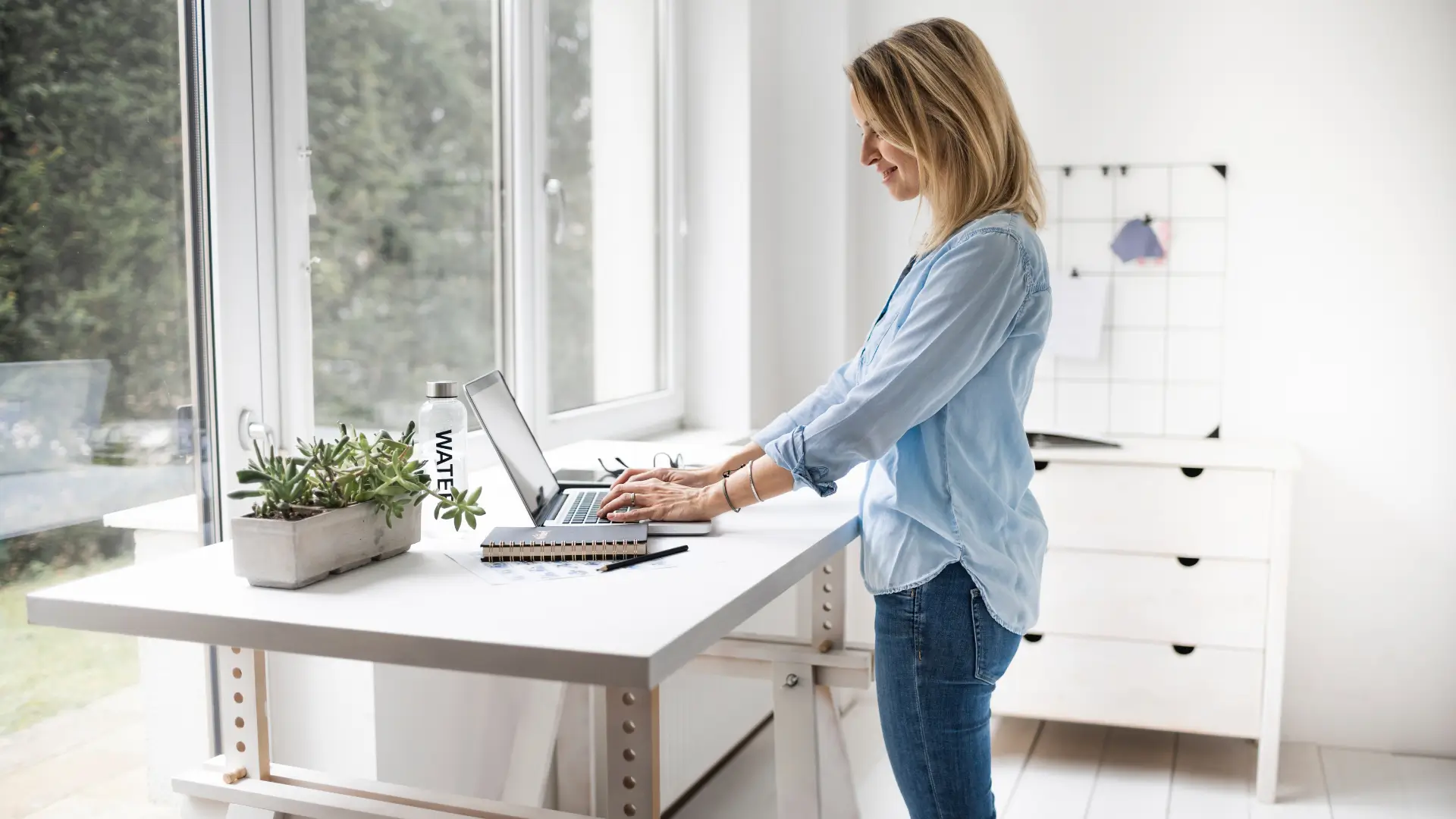
FAQs about lower back stretchess
Why are lower back stretches important?
Lower back stretches relieve tension and pain, reducing stiffness and improving overall flexibility. They can also prevent injuries related to poor lower back health.
How often should I do lower back stretches?
Depending on your overall health and physical needs, you may wish to stretch daily. A good benchmark is 2-3 times per week, but always consult with your healthcare provider or doctor before starting any new exercise routine.
What are the best stretches for relieving lower back pain?
The best stretches for relieving lower back pain include: child’s pose, knee-to-chest stretch, pelvic tilts, cat-cow poses, seated spinal twists, bridge exercises, hip flexor stretches and legs-up-the-wall.
How to loosen tight lower back muscles?
You can loosen tight lower back muscles by stretching. Popular stretches include: child’s pose, knee-to-chest stretch, pelvic tilts, cat-cow poses, seated spinal twists, bridge exercises, hip flexor stretches and legs-up-the-wall.

